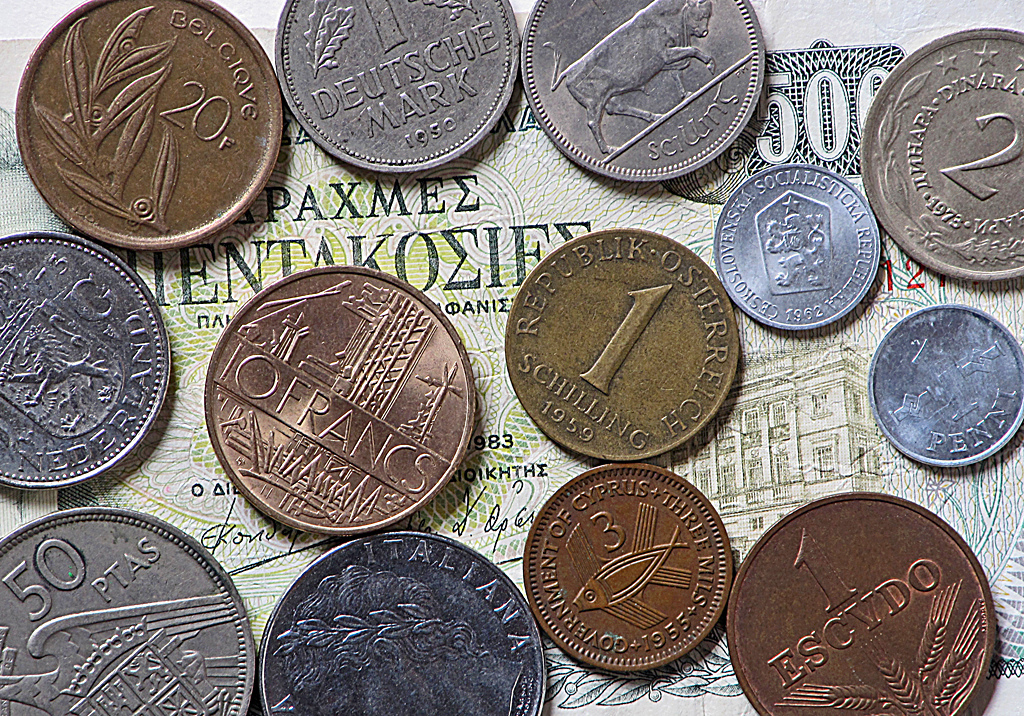Almost half of the region’s "hidden treasures" belong to German citizens, despite the fact that the country introduced the euro a few years earlier than, for example, Latvia and Lithuania, which were the last of the 19 block countries that started using the euro.
France, with a large number of still kept francs, is in second place after Germany. The third goes Spain, where the peseta has long given way to the euro, yet still many bills and coins have not been not exchanged.
About a third of the total number of obsolete banknotes and coins in the region are now useless. 12 national central banks refused their duties to withdraw coins from circulation. Exchange of banknotes has expired in France, Italy, Finland and Greece.
Fortunately for inhabitants of Germany, they do not need to rush. The Bundesbank said it would "endlessly" exchange "an unlimited number" of Deutschemarks. The Bank of Portugal, on the contrary, stopped exchanging coins at the end of the same year, when the euro was adopted, which rendered useless 48% of the circulating escudos.
Deadlines for the cash exchange irritated many residents of the euro area, who missed the opportunity to exchange their savings. Last year, the Bank of Italy ordered to buy liras for a total amount of € 2.5 million, after public representatives complained to the country's constitutional court that the central bank unexpectedly changed the money exchange deadline back in 2011.
Meanwhile, the European Central Bank (ECB) intends to issue a new EUR 50 note in the framework of the campaign to introduce new banknotes with better security parameters, ABC News writes.
The new Euro 50 banknotes, which went into circulation on April 4, have a number of new parameters, which are not visible at the first glance. The main colors remain the same - orange and brown, and there’s a new watermark that pictures a heroine of ancient Greek mythology - Europa.
In addition, when you tilt the bill in the lower left corner, the color changes from blue to dark green. Another noteworthy innovation is indication of the ECB abbreviation in ten instead of five languages and the inscription "euro", which is now also in Cyrillic. Besides, the new banknotes have special signs for visually impaired and blind people.
New bills will be more durable than previous versions, and images on them will show different architectural styles of European history. The bill of 50 euros will be followed new ones, the par value of which will be 100 and 200 euros.
In total, the union printed 6.5 million new banknotes. Old bills are still in circulation, but are expected to be removed soon in a natural way due to wear and tear.
There are 18 billion banknotes for a total amount of 50 euros in circulation now, which makes about 45% of all banknotes of the single European currency.
source: bloomberg.com
France, with a large number of still kept francs, is in second place after Germany. The third goes Spain, where the peseta has long given way to the euro, yet still many bills and coins have not been not exchanged.
About a third of the total number of obsolete banknotes and coins in the region are now useless. 12 national central banks refused their duties to withdraw coins from circulation. Exchange of banknotes has expired in France, Italy, Finland and Greece.
Fortunately for inhabitants of Germany, they do not need to rush. The Bundesbank said it would "endlessly" exchange "an unlimited number" of Deutschemarks. The Bank of Portugal, on the contrary, stopped exchanging coins at the end of the same year, when the euro was adopted, which rendered useless 48% of the circulating escudos.
Deadlines for the cash exchange irritated many residents of the euro area, who missed the opportunity to exchange their savings. Last year, the Bank of Italy ordered to buy liras for a total amount of € 2.5 million, after public representatives complained to the country's constitutional court that the central bank unexpectedly changed the money exchange deadline back in 2011.
Meanwhile, the European Central Bank (ECB) intends to issue a new EUR 50 note in the framework of the campaign to introduce new banknotes with better security parameters, ABC News writes.
The new Euro 50 banknotes, which went into circulation on April 4, have a number of new parameters, which are not visible at the first glance. The main colors remain the same - orange and brown, and there’s a new watermark that pictures a heroine of ancient Greek mythology - Europa.
In addition, when you tilt the bill in the lower left corner, the color changes from blue to dark green. Another noteworthy innovation is indication of the ECB abbreviation in ten instead of five languages and the inscription "euro", which is now also in Cyrillic. Besides, the new banknotes have special signs for visually impaired and blind people.
New bills will be more durable than previous versions, and images on them will show different architectural styles of European history. The bill of 50 euros will be followed new ones, the par value of which will be 100 and 200 euros.
In total, the union printed 6.5 million new banknotes. Old bills are still in circulation, but are expected to be removed soon in a natural way due to wear and tear.
There are 18 billion banknotes for a total amount of 50 euros in circulation now, which makes about 45% of all banknotes of the single European currency.
source: bloomberg.com





